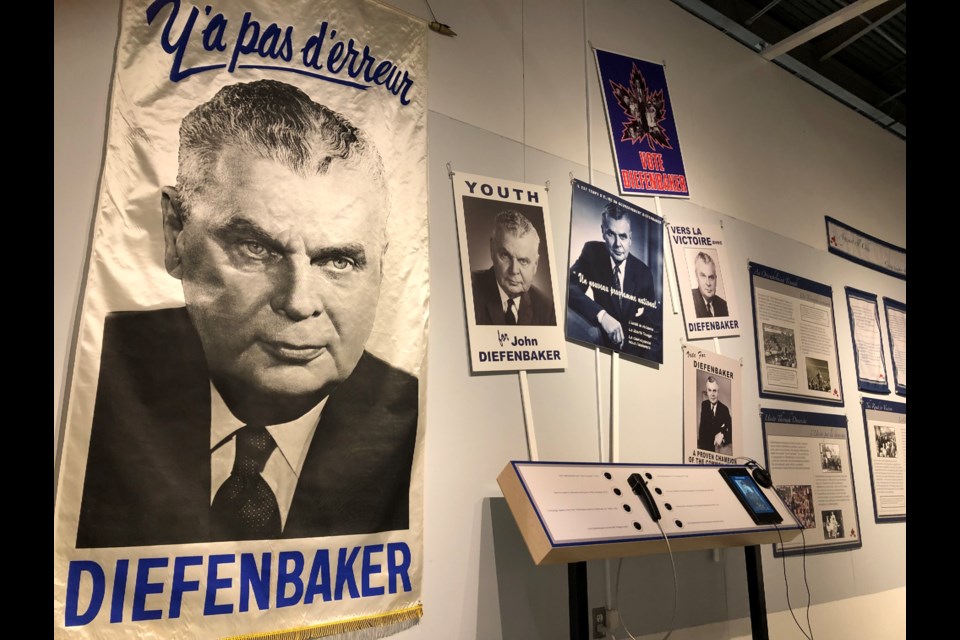Former Prime Minister John Diefenbaker was dedicated to equality and human rights as a lawyer and as prime minister, while he was also the first leader to include minorities in his cabinet.
These aspects of his life are now on display at the Western Development Museum (WDM) in Moose Jaw, as part of the exhibit One Canada: Diefenbaker’s Vision. From now until the end of September, visitors can get a glimpse into the mind of Canada’s 13th prime minister — the only one from Saskatchewan — through objects, text panels, art, videos and audio recordings.
The exhibit will travel to all four WDMs across Saskatchewan; Moose Jaw is the first to receive it.
“It’s a really nice exhibit. There is a lot of information, but the way it is set up and spaced out, it’s not overwhelming,” said Kathy Fitton, WDM manager. “You can take your time.”
From the beginning of his career as a lawyer, Diefenbaker was committed to equality and human rights, she continued. Growing up in Prince Albert, he spent much time understanding the living conditions of First Nations people. When he went into law, it became important to him to take on cases even if his clients couldn’t pay.
“He was there for everyone,” Fitton said, adding when he became prime minister, he also worked to include French Canadians in everyday life.
Diefenbaker — who served from 1957 to 1963 — is known for introducing the Canadian Bill of Rights in 1960. He also gave Aboriginals the right to vote without the need to for them to give up their Indian status; was the first to include in his cabinet a woman, a Ukrainian man and two Chinese men; and appointed the first Aboriginal person to the Senate.
Diefenbaker also opposed Apartheid in South Africa and stood up to United States President John F. Kennedy by saying no nuclear-tipped missiles would be allowed on Canadian soil.
Fitton joked that she doesn’t remember Diefenbaker since he was before her time. However, since she grew up in Nipawin, she noted it was a source of pride for residents there that Canada’s 13th prime minister came from a community 90 minutes away.
“We’re really fortunate that we have a travelling exhibit gallery. It’s something we try to do as much as possible, is bring something different outside of our collection so it can reach a broader audience,” Fitton said.
There is plenty of time to visit the exhibit since it is here until September, she pointed out. Visitors can get into the museum by paying regular admission, while members can get in for free. There is much information about Diefenbaker that visitors can learn about.
Fitton’s favourite part of the exhibit is a wooden globe that has the crests of every province carved into it.
“I know that he was a man of the people,” she added. “I did not realize how true that was. In seeing this exhibit and learning more about him and his politics, he really stood behind that, and he made some real inroads to equality and ensuring people’s human rights were upheld.”
For more information call 306-693-5989.




